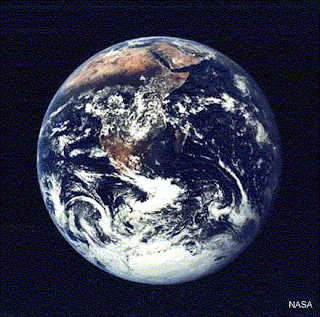
I like coffee. I like it a lot. For years I have struggled with a Starbucks habit; my youngest was practically raised by baristas during my year off work as a stay-at-home dad, and by the age of one she knew the Starbucks logo well enough to exclaim with glee when we passed one. ( A "vente" cup of hot water makes a superb bottle warmer, by the way. See my old
sbxfairtrade blog for handy hints if you are a stay at home dad.)
Thankfully, however, I have managed to ratchet my Starbucks habit
way down over the past year. Oh I still drink coffee everyday, but thanks to a serendipitous gift of a reusable mug last year, my growing green sentiment, and the realization of the budgetary effects of store-brewed coffee, I only occasionally indulge in a stop at the "coffee store."
Green Issues, Black CoffeeCoffee is an interesting beverage in many eco-respects, as it embodies several different green issues. Correcting even a few of the bad things about the way you get your caffeine fix can make a big difference.
The issues range from the use of non-recyclable paper cups and plastic lids, to where and how the coffee is grown; from your choice of brewing method to how you keep the java hot. Each separately can be a significant factor in the green-color of your coffee's history. But let's start with one easy one: the kind of cup you use.
Buy the CupI was given a gift of a Starbucks brand 16 ounce reusable travel cup last year for a holiday gift. I have used it every day, sometimes several times a day, ever since then.
Our friends over at the Bring Your Own Blog have already made the paper-cup point succinctly.
Which is Greener: Recycled Paper or Reusable?
There are several elements that must be considered to demonstrate that a reusable cup is better than a one-time use cup; most analysis take into consideration only one part of the multifaceted problem.
First is the embodied energy used in manufacturing the cup. A reusable cup will have more energy in its initial manufacture, and has to be washed, but over time it will save energy each over a similar number of paper or foam cups. One major factor is how the cup is washed: I rinse mine daily in warm tap water with a little soap; most studies assume the use of an energy hog dishwasher, albeit a relatively efficient energy hog as those things go.
On this basis, a reusable cup is relatively more energy efficient, at least if it is used repeatedly as intended.
Next is the issue of the resources used to create the cup. Plastic and foams come from oil. In generally, the fewer products made from oil, the better; whether you want to reduce the impact of oil drilling or think gas prices should be lower, less oil for cups is desirable. Paper cups, of course, come from trees, and in some cases a small percentage of post consumer recycled paper.
Then there is the disposal issue. Although paper cups may degrade over time, they take up landfill space in the meantime. And since many paper cups are, in fact, plastic coated, that degradation is not total, or quick. Neither plastic nor foam cups degrade in any reasonable amount of time (hundreds of years even in a landfill), and many spend time drifting around the landscape or floating around the ocean, where they kill wildlife.
Using an average of one disposable cup per day adds in the range of 25 lbs of solid waste to the landfill stream, and creates a larger pool of trash which can becomes "feral" and degrades the environment directly. (See, e.g., Report of the Green Restaurant Association and Report of the Starbucks Coffee Company / Alliance for Environmental Innovation Joint Task Force, p. 8-9.)
Finally, plastic and plastic coated food products have recently been implicated in all sorts of health problems, including reproductive defects in children born to women exposed to certain kinds of plastics. These plastics leach byproducts into our food, and into the environment for as long as they are around.
The Whole Story
Looking at the whole story, then, it is easy to see that the reusable to-go cup is a significant ecological improvement over one-use paper or plastic cups.
Reusable to-go cups also have a psychological advantage, too, by stepping away from the disposable mindset.
Which Reusable Cup?
So far the best reusable cup appears to be stainless steel. This metal is well known to be inert and resistant to just about anything you put in it. It washes up quick and easy by hand, and works equally well with hot and cold drinks. Many coffee outlets sell metal ones . . . to take it one step further, one can skip plastic water bottles too: One supplier of disposable cup and bottle replacements is the KleanKanteen company.
Plastic reusables are, at least, reusable; but since the use of plastic in food products is increasingly suspect, as noted above, a plastic mug cannot be recommended. Ceramic mugs have some of the lowest embodied energy, according to research studies, but for travel a steel mug is extremely durable and about the cleanest choice.
Paper, whether made from all virgin wood or some small percentage "post-consumer recycled content" still contains a lot of new tree material, and requires a reasonable amount of water and energy to make into each new cup, even with recycled content.
My stainless steel travel mug took a lot of energy to make, more than a few paper cups worth, certainly. But it's energy cost is spread out over hundreds of cups of coffee and years of use. And there is an additional benefit: I never throw it away (at least until it
finally wears out), so it does not add to a landfill or pollute the local environment they way disposables do.
And yes, that cardboard cup almost certainly gets buried in a landfill somewhere. Even if you rinse the cup and toss it in your recycle bin, more likely than not this is not helping: Most paper products used for food are not recycled. Greasy pizza boxes and used paper cups are routinely plucked from the paper recycling by most companies and disposed of as simple landfill garbage.
Although plastic food containers can sometimes be recycled, and most plastic cups have a recycling number on the bottom, many many jurisdictions do not accept them, and few recycle the kind of foam from which foam cups are made.
Moreover, plastic cups get into the environment by accident too (or deliberate littering) and do not decompose at all. Instead they wash into storm drains, helping to clog them, and as often as not wash right out to sea.
It hardly seems like a big deal, but there is, after all, a lot riding on the cup from which you drink your coffee. And somehow that morning cup 'o joe just tastes better green.












 I Would But . . .
I Would But . . .





